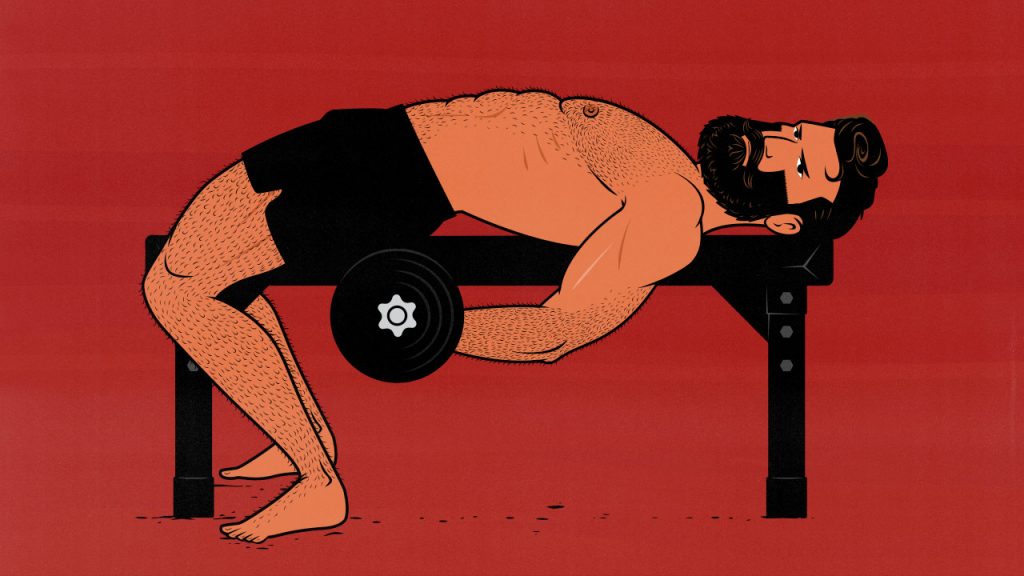
How to Do Lying Dumbbell Biceps Curls
The lying biceps curl is a variation of the dumbbell curl. The difference is that it works your biceps through a deeper range of motion, challenging your biceps under a greater stretch, thus stimulating more muscle growth.
I’ll teach you how to do them, then explain why they’re so powerful. The research is fascinating. And just wait until you try them. You’ll feel the difference right away.
Tutorial Video
I thought it would be easiest to teach you these with a short tutorial video.
Here are some guidelines:
- Make sure they feel good on your shoulders. Like with deficit push-ups, dips, and dumbbell flyes, lying dumbbell curls demand quite a bit of mobility from your shoulders. That’s great for improving your shoulder health and strength, but you need to be ready for them. If they feel bad, you could try a lighter weight. If they still feel bad, stick with regular curls for now.
- You don’t need to fully contract your biceps at the top. When you feel the tension on your biceps starting to ease up, you can lower the weights back down again. This turns it into a sort of lengthened partial.
- Lying biceps curls work your biceps quite a bit harder than regular curls. Expect to feel extra soreness. If you don’t want extra soreness, stay further from failure or do fewer sets.
Research Breakdown
The biceps in your arms are quite similar to the biceps in your legs. The biceps femoris are part of your hamstrings. They cross both the hip and knee joints. That means you can train your hamstrings with Romanian deadlifts and with hamstring curls.
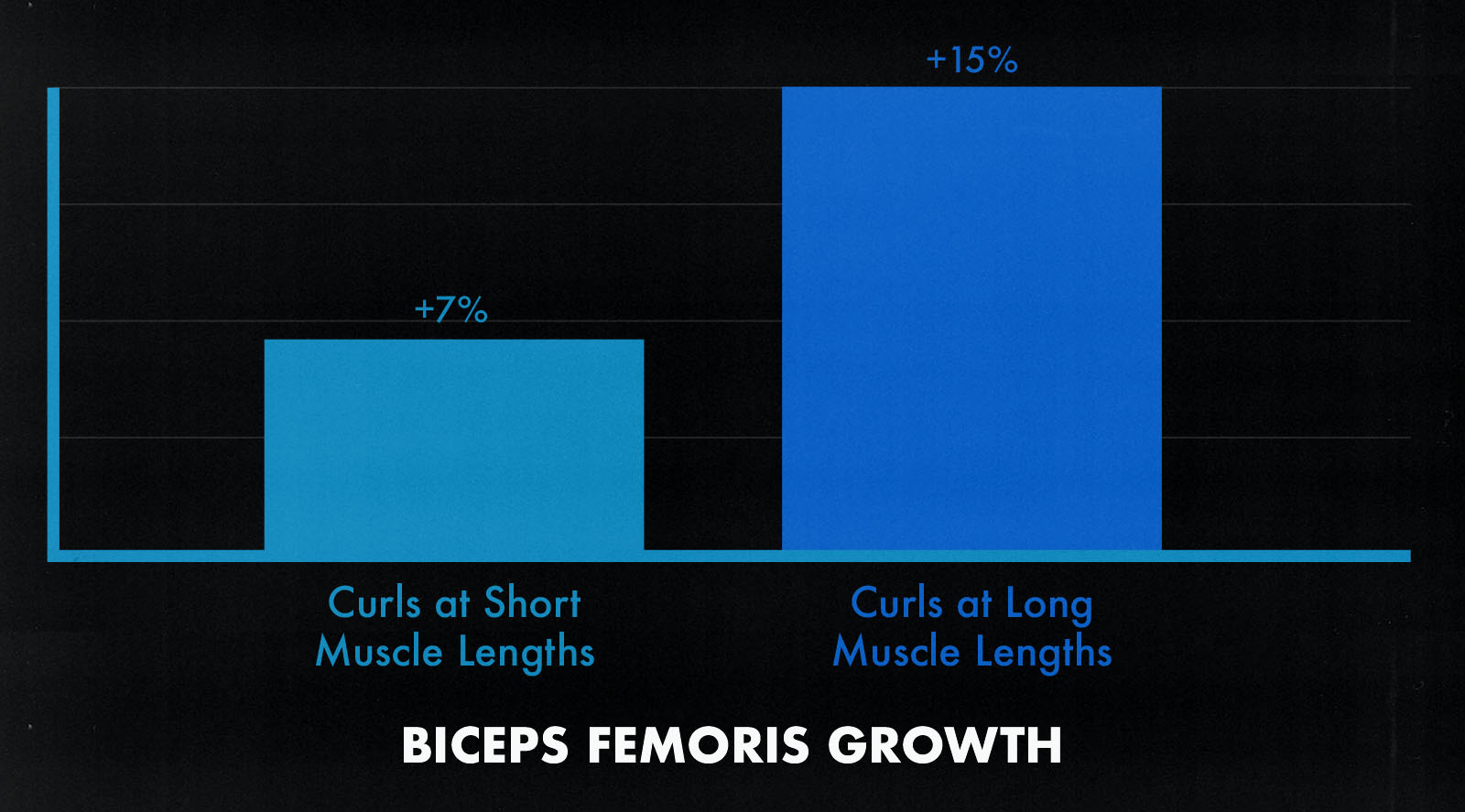
Here’s where it gets interesting: the researchers compared seated hamstring curls (biceps stretched at hips) against lying hamstring curls (no stretch). It turns out that if you stretch your biceps femoris at the hip joint while doing hamstring curls, you gain twice as much muscle (study).
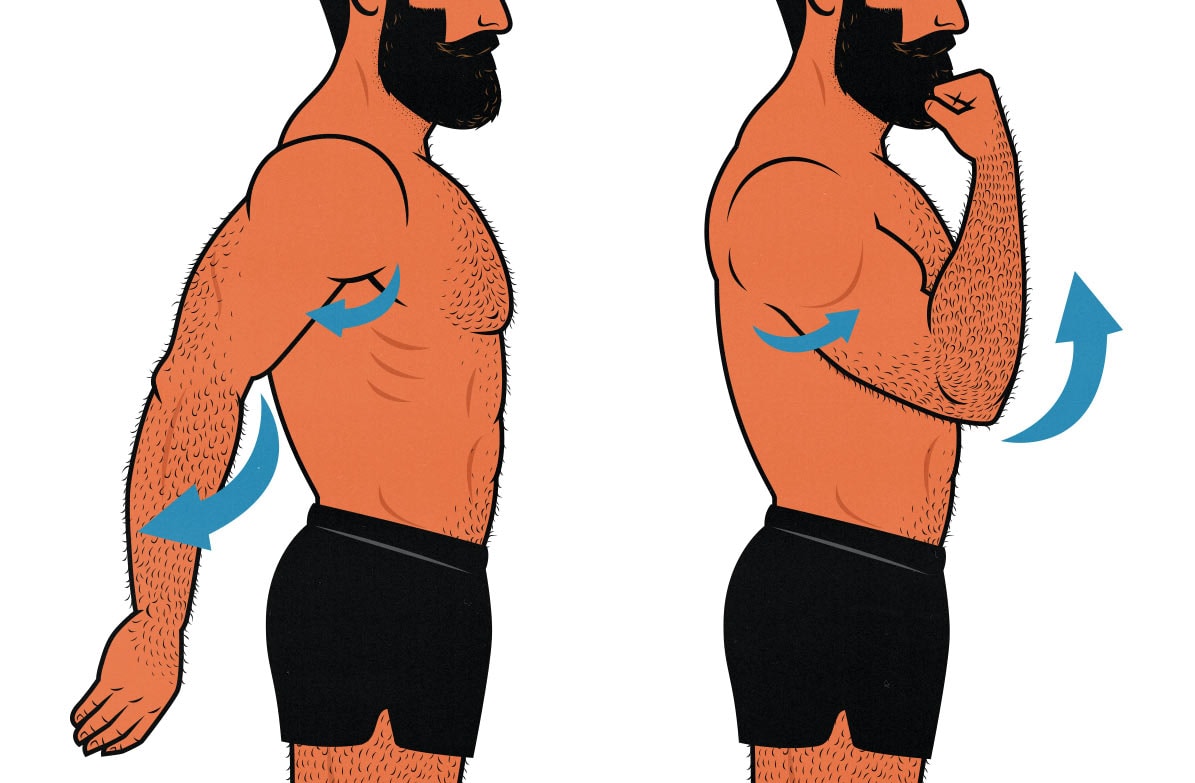
You can do the same thing with the biceps in your arms. The long head of your biceps crosses both the shoulder and elbow joints. If you stretch them at the shoulder, I suspect you can stimulate far more muscle growth.
The Power of Lying Biceps Curls
When you move your elbows behind your body, you can work your biceps through a deeper range of motion. There are a few different curl variations that attempt to do this:
- Drag curls: You can do standing biceps curls with your elbows behind your body. But there’s no tension at the bottom of the exercise. All the tension is at the top.
- Incline curls: You can do incline curls, stretching your biceps at the shoulder joint, but the bottom portion of the lift isn’t particularly hard. These are great, but we can do a little better.
- Bayesian curls: You could set up a cable stack behind you, challenging your biceps through a deep range of motion. These are fantastic.
Lying biceps curls are incredibly similar to Bayesian curls. The main difference is that lying biceps curls are more stable. I think this might make them the better of the two. I certainly prefer them.
If you try lying biceps curls, I think you’ll feel the difference. I think you’ll get a bigger pump, feel more muscle soreness a day or two later, and have an easier time building bigger, stronger biceps.
Alright, that’s it for now. If you want to build these lying curls into a balanced biceps workout, check out this article.



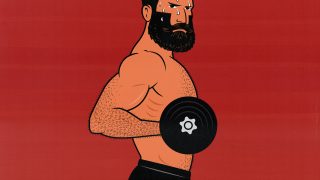

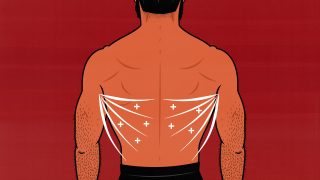
Amazing! This may be a game-changer for me to get past a plateau (been incorporating drop sets, but this may be better). Being quite tall with monkey arms, this is what I always needed!
Yeah! That’s exactly how I’d use an exercise variation like this. It doesn’t need to become a new staple lift. It’s more of a tool to use when you need it. Using it to break through a plateau is perfect.
Let me know what you think of them!
Thanks for introducing me to these! They make so much sense!
I was having trouble at first with shoulder discomfort, but as I was googling around I came across a variation of lying curls where you lie perpendicular to the bench with your shoulders on the bench, as you would do for a glute bridge, in order to “support” the shoulder and upper arm. This makes all the stretch sensation happen at the elbow joint rather than the shoulder. It feels more like preacher curls, which I’ve come to love. Does that make sense? Is there a downside to supporting the upper arm this way?
(your arms are still angled back below our torso, your body position looks almost identical, but there is less stretch sensation at the shoulder. To me they’re more comfortable)
Yeah, I love that stretch sensation at the shoulder, but you’re still getting that preacher curl effect of making the exercise more challenging earlier in the range of motion, while your biceps are at longer muscle lengths. That should be awesome for muscle growth.
I’ve tried some variations with the elbows more supported and didn’t like them as much. But I haven’t tried the variation you’re talking about. I’ll give it a go. If it feels good, I don’t imagine it being a problem. In theory, should work well.